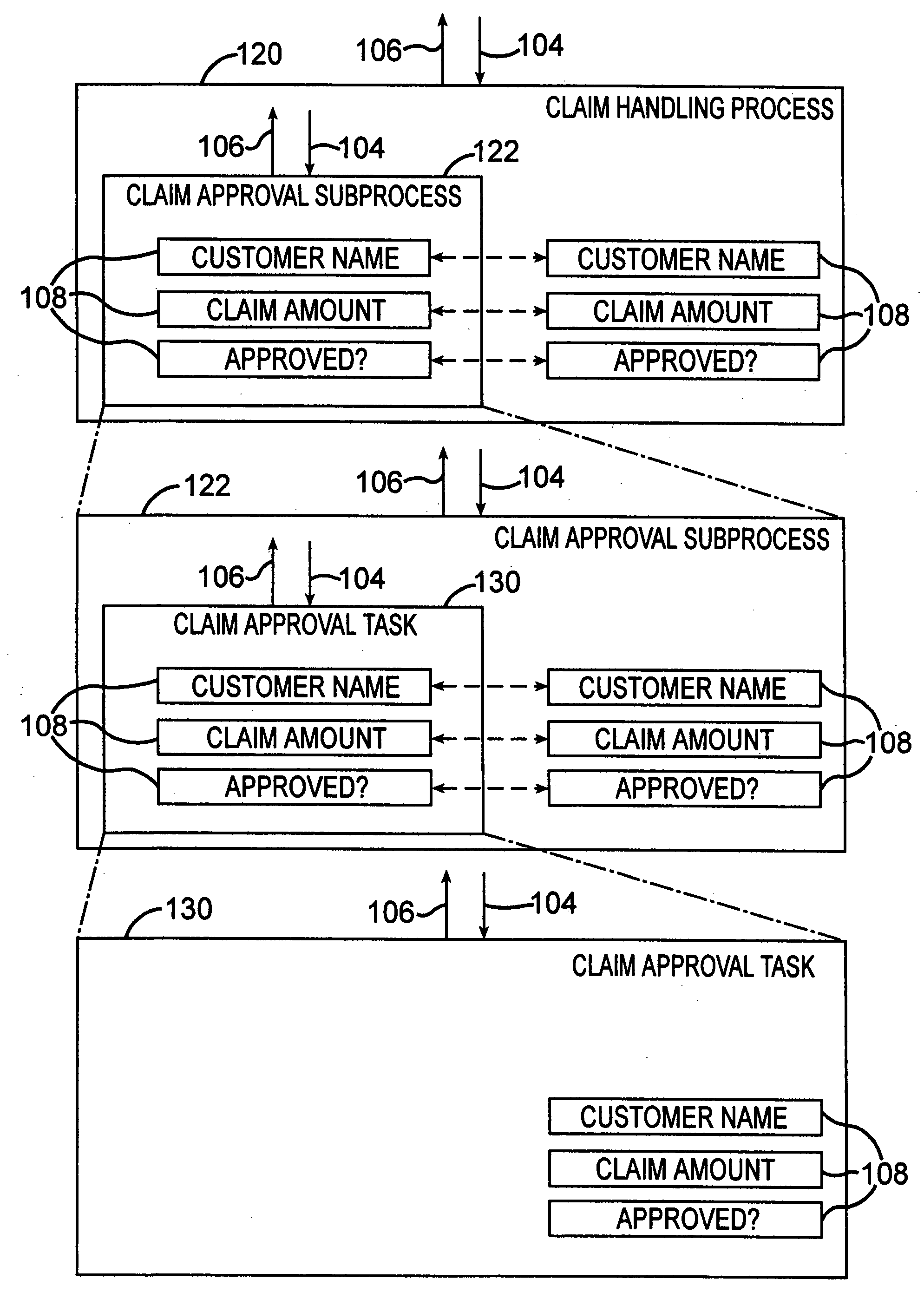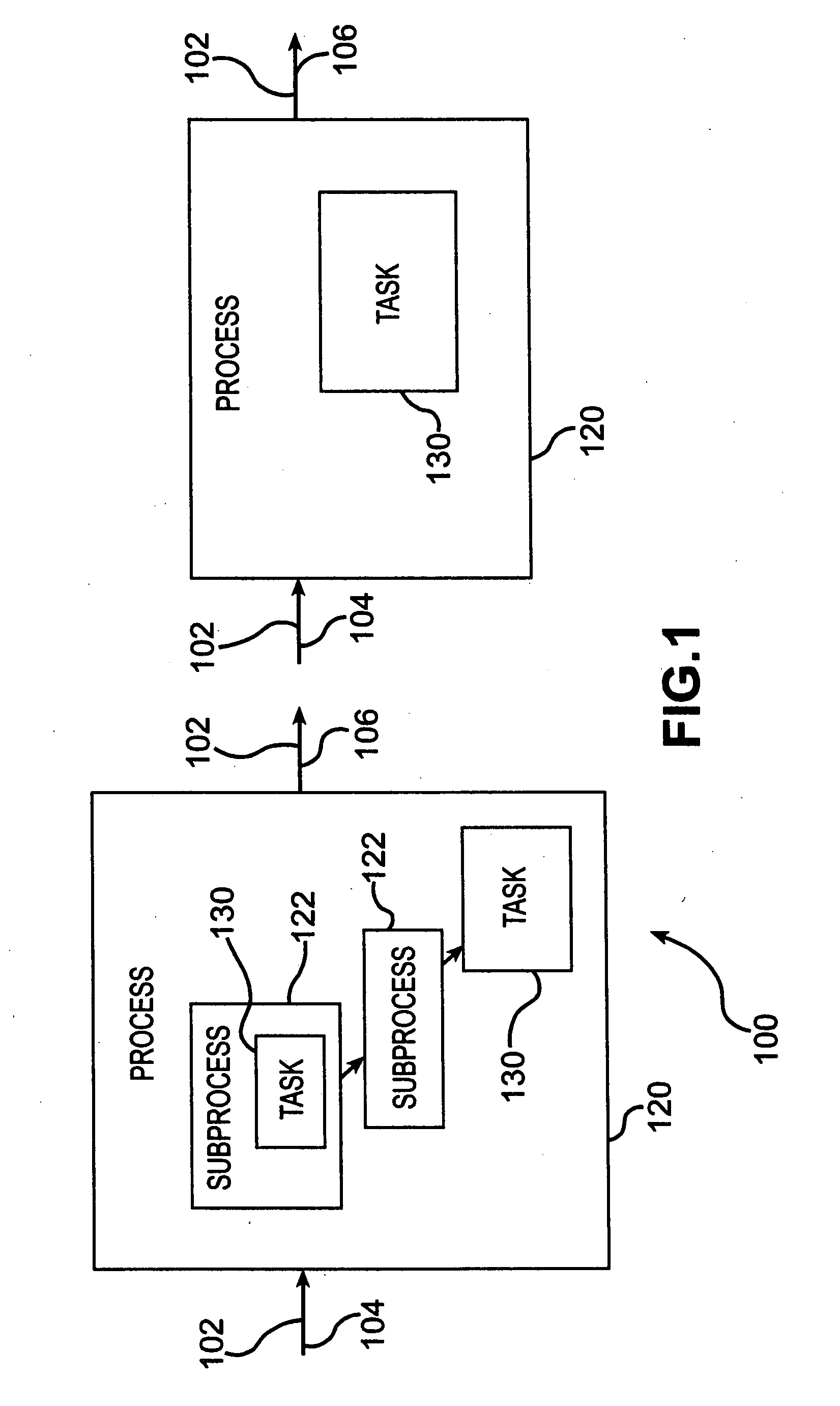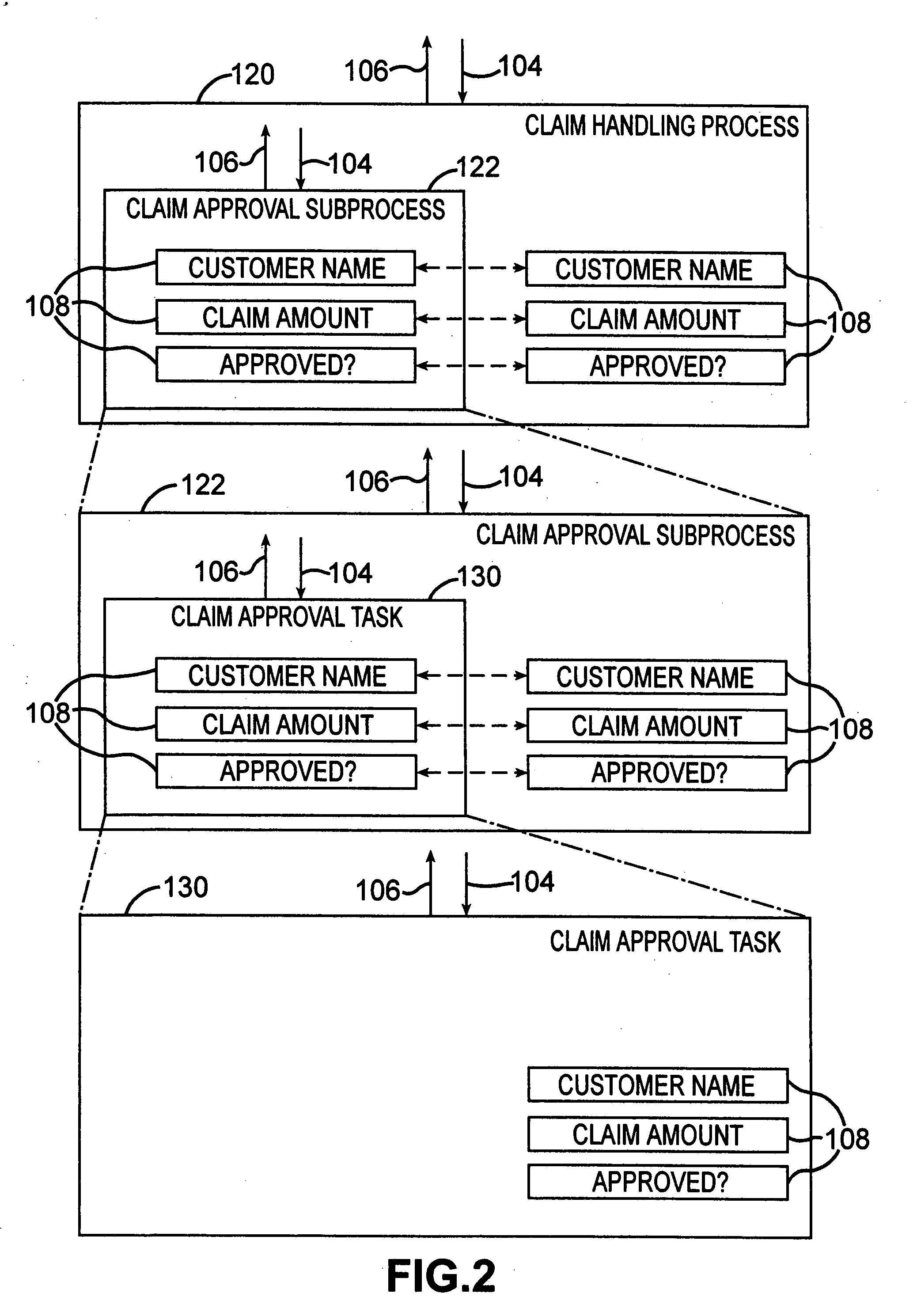Method and system for top-down business process definition and execution
- Summary
- Abstract
- Description
- Claims
- Application Information
AI Technical Summary
Benefits of technology
Problems solved by technology
Method used
Image
Examples
Embodiment Construction
[0039] Process Model 100
[0040] As shown in FIG. 1, a process model 100 is a representation or model of the business activities that exist in a corporation, division, or some other type of entity or business unit. Each process model 100 will contain one or more processes 120, each of which represent a specific real-world business activity. Example processes 120 include “accepting purchase orders” and “paying an invoice.”
[0041] Each process 120 may include one or more subprocesses 122 or one or more tasks 130. A task 130 is typically a unit of work that is performed by a person or an automated computer program as a step within a process 120. Entering a purchase order on a computer terminal and sending a check to be printed to a printer are example tasks 130. Enclosing subprocess 122 within process 120 indicates that the subprocess 122 must be completed before the enclosing process 120 can be deemed complete. A single process 120 can contain multiple subprocesses 122, but may directly ...
PUM
 Login to View More
Login to View More Abstract
Description
Claims
Application Information
 Login to View More
Login to View More - R&D
- Intellectual Property
- Life Sciences
- Materials
- Tech Scout
- Unparalleled Data Quality
- Higher Quality Content
- 60% Fewer Hallucinations
Browse by: Latest US Patents, China's latest patents, Technical Efficacy Thesaurus, Application Domain, Technology Topic, Popular Technical Reports.
© 2025 PatSnap. All rights reserved.Legal|Privacy policy|Modern Slavery Act Transparency Statement|Sitemap|About US| Contact US: help@patsnap.com



